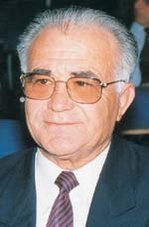Information from American History Reference - BOURA
Categories: Ancient Greek cities Sunken cities
Boura (also Bura, Bouraios, Bourios), was an ancient Greek city that was destroyed in the same way that the contemporary city of Helike was.
The city was named for the daughter of Ion and Helice.
The city was situated 40 stadia from the sea, and south east of Helike. Its name occurs in a line of Aeschylus, preserved by Strabo. It was swallowed up by the earthquake which destroyed Helike, and all its inhabitants perished except those who were absent at the time.
On their return they rebuilt the city, which was visited by Pausanias, who mentions its temples of Demeter, Aphrodite, Eileithyia and Isis. Strabo relates that there was a fountain at Bura called Sybaris, from which the river in Italy derived its name.
On the revival of the Achaean League in 280 BC, Bura was governed by a tyrant, whom the inhabitants slew in 275 BC, and then joined the confederacy. A little to the east of Bura was the river Buraïcus ; and on the banks of this river, between Bura and the sea, was an oracular cavern of Heracles surnamed Buraicus. The ruins of Bura have been discovered nearly midway between the rivers of Bokhusia (Cerynites), and of Kalavryta (Buraicus) near Trupia . Ovid says that the ruins of Bira, like those of Helike, were still to be seen at the bottom of the sea; and Pliny makes the same assertion. Hence it has been supposed that the ancient Bura stood upon the coast, and after its destruction was rebuilt inland; but neither Pausanias nor Strabo states that the ancient city was on the coast, and their words render it improbable. This text is based on the entry in the Dictionary of Greek and Roman Geography , by William Smith, LLD, 1854.

1 comment:
I seldom leave comments on blog, but I have been to this post which was recommend by my friend, lots of valuable details, thanks again.
Post a Comment